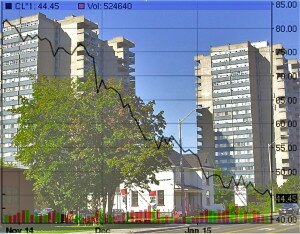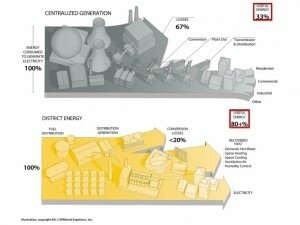 The plunging price of oil is making headlines around the world. Does this mean the business case for energy efficiency retrofits will also melt down?
The plunging price of oil is making headlines around the world. Does this mean the business case for energy efficiency retrofits will also melt down?
Because people tend to equate oil and energy, there seems to be an assumption that the prospects for continued investments in energy efficiency – and the associated greenhouse gas emission reductions – are bleak. This is incorrect.
Let’s not mix apples and oranges. Most oil is used for transportation in the form of gasoline and diesel fuel. Almost no oil is used for heating buildings and generating electricity.
In Toronto, for instance, 50% of our greenhouse gas emissions come from natural gas used to heat our buildings and the electricity used to power the motors and appliances in buildings.
On the other hand, the gasoline and diesel used in our cars and trucks – the oil part of our energy — accounts for about 40%.
In Ontario as whole, just 4.4% residential buildings and 0.9% of commercial ones are heated with oil and there is only one electricity generation plant that continues to use oil seasonally – during winter periods of peak natural gas use.
That said, the low prices at the pump are beginning to foreshadow a disturbing trend with respect to a potential increase in transportation emissions, with recent reports showing jumps in purchases of passenger vehicles and higher sales of light trucks. Will the trend put even more pressure on Toronto’s growing emissions of greenhouse gases and air pollutants from local vehicles?
In short, low-cost oil has no impact on the energy retrofit business case. In fact, energy retrofits remain profitable despite relatively low natural gas prices, and will only provide stronger returns as energy prices increase. Plus, retrofits provide significant improvements to building value and comfort.
So don’t let the current 90-cent gasoline fool you: buildings don’t run on oil. Besides, the cheapest energy is always the energy you don’t use.










 As an acknowledged leader in the field of impact investing, it comes as no surprise to us that Ontario’s first $500 million green bond, offered in September, was almost five times over-subscribed. The capital raised will be dedicated to infrastructure projects like the Eglinton Crosstown LRT, now under construction. Funding of large transit projects in the region is a priority for TAF, because getting people out of personal vehicles and onto public transit addresses a major local source of greenhouse gas and air pollution.
As an acknowledged leader in the field of impact investing, it comes as no surprise to us that Ontario’s first $500 million green bond, offered in September, was almost five times over-subscribed. The capital raised will be dedicated to infrastructure projects like the Eglinton Crosstown LRT, now under construction. Funding of large transit projects in the region is a priority for TAF, because getting people out of personal vehicles and onto public transit addresses a major local source of greenhouse gas and air pollution.